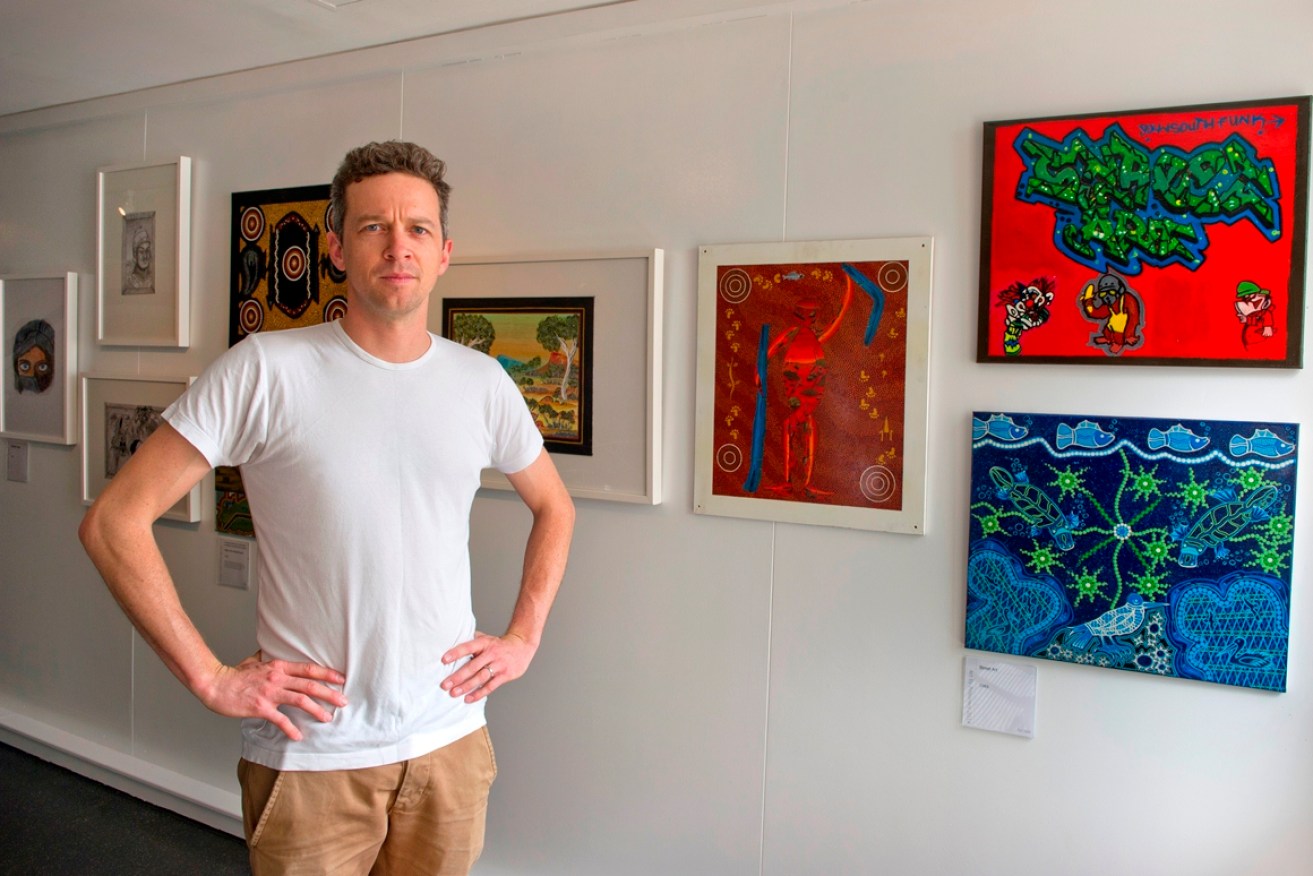
Art’s insights on both sides of the prison wall

Jeremy Ryder with entries in the Art by Prisoners exhibition
The third Art by Prisoners exhibition has attracted by far its largest number of entries, with works submitted from all of South Australia’s nine adult penal institutions.
“We even have a sketch by an 18-year old prisoner at the Remand Centre,” said the exhibition co-ordinator, Flinders PhD candidate Jeremy Ryder.
To be launched in the foyer of The Space of the Festival Centre this evening, the exhibition showcases visual art and ceramics by serving prisoners. Conceived as part of Mr Ryder’s PhD in Criminology , the aim of Art by Prisoners is to connect prisoners in South Australian gaols with the wider community through the medium of art.
The project is supported by the Department for Correctional Services, the Adelaide Festival Centre and the Commissioner for Victims’ Rights, and draws its judges from staff of Tandanya, the Adelaide Festival Centre, the Art Gallery of South Australia and the Flinders University Art Museum.
Mr Ryder attributes the spike in entries to “a combination of word-of-mouth among prisoners with really good support from really good people in the Department”.
Mr Ryder said he hoped that the talents on show would help to remind the public that there is more to prisoners than their crimes.
“There’s a good range of artworks from simple pencil sketches on paper to highly elaborate, highly skilled acrylic paintings on canvas, and some really good pottery as well,” he said.
As part of his PhD, Mr Ryder has collected hundreds of responses from the public to the exhibitions. Most people, he said, found the art “an eye-opener”.
“It offers a unique insight that contrasts with the negative news and images that are the way people normally view prisons,” he said.
Mr Ryder said that for the prisoners, art helps to mitigate the more negative aspects of incarceration, helping them to pass the time and also providing ways to create an alternative psychological space.
“And in an environment where a lot of things are done for you, this is something the prisoners can do for themselves. In a small way, art allows prisoners to take the initiative,” he said.
He said that programs which contributed to prisoners’ self-esteem and helped to normalise life behind bars should be valued.
“I hope this exhibition and others like it open up alternative conversations about who prisoners are, and what prisons could be,” Mr Ryder said.
“Politicians may feel compelled to talk about being tough on crime, but we also need to remember that nearly all the prisoners will be released back into society at some point.”




